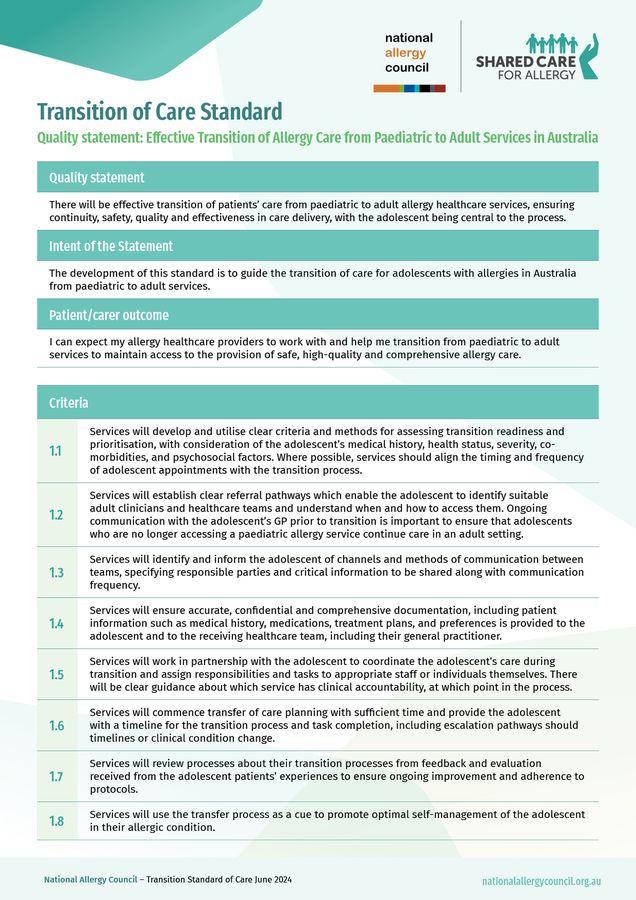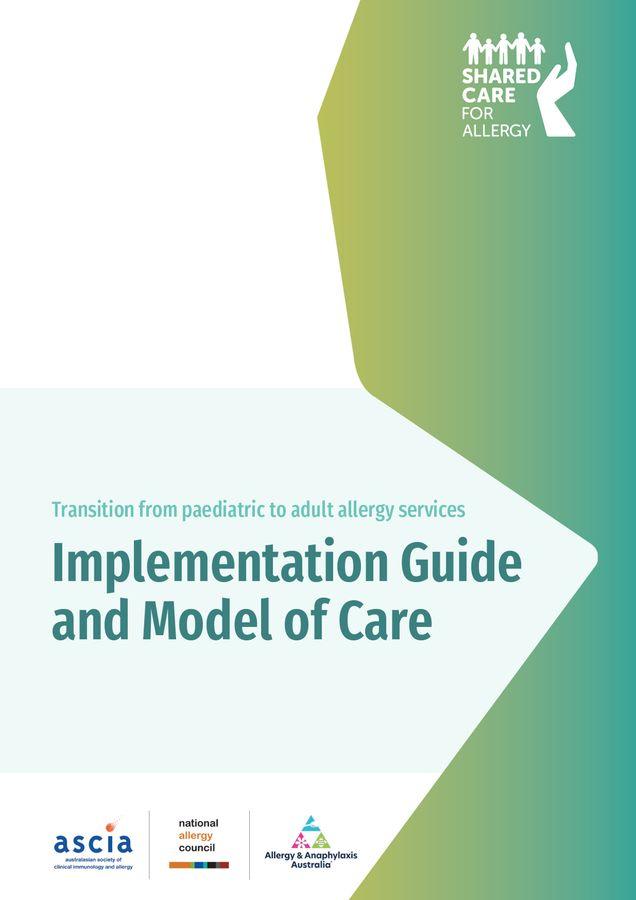Transition of Care Standard

- Home
- Programs
- Shared care for allergy
- Transition of Care Standard
Improving continuity and quality of allergy care for young Australians
As part of the Shared Care for Allergy program, the National Allergy Council has developed Australia’s first Transition of Care Standard for how allergy care should be delivered as young people move from paediatric to adult health services.
This standard addresses a well-known gap in the healthcare system which is the high-risk period when young people with allergic conditions transition out of paediatric care. Without the right support, they risk falling through the gaps, losing access to care, missing important treatments, or facing delays.
The Transition of Care Standard addresses this by setting out what good care looks like before, during and after they move from paediatric to adult allergy services. It sets clear expectations for communication, planning, information sharing, and young person readiness, providing a consistent, high-quality approach across health systems.
The Transition of Care Standard was developed with input from patients, families, healthcare professionals and healthcare teams.
This standard is more than guidance, it’s a tool for change. It can be used by health services, peak bodies and advocacy groups to drive policy reform, guide service planning, and push for the resources needed to deliver better care.
To support real-world implementation, an implementation guide and model of care have also been developed. The implementation guide is a practical resource to accompany the Standard and helps services translate it into practice. The model of care is framework for how services set up, deliver and embed effective transition processes that meet the needs of young people and their families.
The standard is available for use by public and private health services across Australia.
Why it matters
Transition should not mean disruption. This national standard ensures that young people with allergy continue to receive the care they need, while building independence, confidence, and long-term engagement in their health.
Transition of Care Standard
Quality statement: Effective Transition of Care from Paediatric to Adult Services
Quality statement
There will be effective transition of patients’ care from paediatric to adult allergy healthcare services, ensuring continuity, safety, quality and effectiveness in care delivery, with the adolescent being central to the process.
Intent of the Statement
The development of standard is to guide the transition of care for adolescents with allergies in Australia from paediatric to adult services.
Patient/carer outcome
I can expect my allergy health care providers to work with and help me transition from paediatric to adult services to maintain access to the provision of safe, high-quality and comprehensive allergy care.
Criteria
1.1 Services will develop and utilise clear criteria and methods for assessing transition readiness and prioritisation, with consideration of the adolescent’s medical history, health status, severity, co-morbidities, and psychosocial factors. Where possible, services should align the timing and frequency of appointments with the adolescent with the transition process.
1.2 Services will establish clear referral pathways which enable the adolescent to identify suitable adult clinicians and healthcare teams and understand when and how to access them. Ongoing communication with the adolescent’s GP prior to transition is important to ensure that adolescents who are no longer accessing a paediatric allergy service continue care in an adult setting.
1.3 Services will identify and inform the adolescent of channels and methods of communication between teams, specifying responsible parties and critical information to be shared along with communication frequency.
1.4 Services will ensure accurate, confidential and comprehensive documentation, including patient information such as medical history, medications, treatment plans, and preferences is provided to the adolescent and to the receiving healthcare team, including their general practitioner.
1.5 Services will work in partnership with the adolescent to coordinate the adolescent’s care during transition and assign responsibilities and tasks to appropriate staff or individuals themselves. There will be clear guidance about which service has clinical accountability, at which point in the process.
1.6 Services will commence transfer of care planning with sufficient time and provide the adolescent with a timeline for the transition process and task completion, including escalation pathways should timelines or clinical condition change [a roles and responsibilities of each service will be defined in the model of care].
1.7 Services will review processes about their transition processes from feedback and evaluation received from the adolescent patients’ experiences to ensure ongoing improvement and adherence to protocols.
1.8 Services will use the transfer process as a cue to promote optimal self-management of the adolescent in their allergic condition.
Stay informed
Subscribe to the Shared Care for Allergy Bulletin.
Follow the National Allergy Council social media on Facebook, Instagram, or LinkedIn.
Content updated September 2025.


